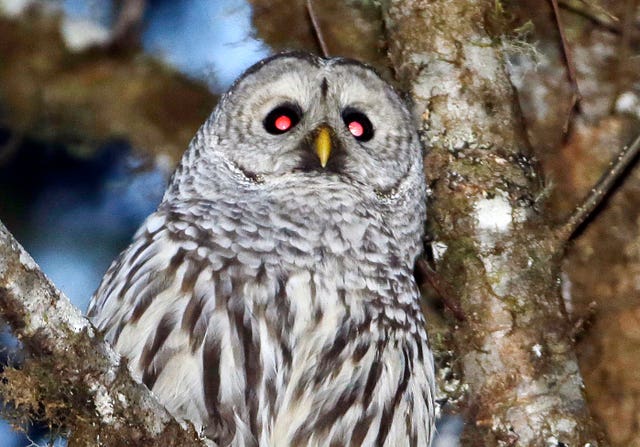Wildlife agency reveals plan to kill 450,000 owls to safeguard another species
The US Fish and Wildlife Service aims to cull thousands of barred owls over three decades to protect the endangered spotted owl.

To save the endangered spotted owl from potential extinction, US wildlife officials are embracing a contentious plan to deploy trained shooters into to kill almost a half-million barred owls that are crowding out their smaller cousins.
The US Fish and Wildlife Service strategy released on Wednesday is meant to prop up declining spotted owl populations in Oregon, Washington state and California. The Associated Press obtained details in advance.
Documents released by the agency show a maximum of about 450,000 barred owls would be shot over three decades after the birds from the eastern US encroached into the West Coast territory of two owls: northern spotted owls and California spotted owls.
The smaller spotted owls have been unable to compete with the invaders, which have larger broods and need less room to survive than spotted owls.

“Without actively managing barred owls, northern spotted owls will likely go extinct in all or the majority of their range, despite decades of collaborative conservation efforts,” said Fish and Wildlife Service Oregon state supervisor, Kessina Lee.
The notion of killing one bird species to save another has divided wildlife advocates and conservationists.
Some grudgingly accepted the barred owl plan, while others say it is reckless diversion from needed forest preservation.
“The Fish and Wildlife Service is turning from protector of wildlife to persecutor of wildlife,” said Wayne Pacelle with the advocacy group Animal Wellness Action.
He predicted the programme would fail because the agency will not be able to keep more barred owls from migrating into areas where some are killed off.
The shootings would likely begin next spring, officials said.
Barred owls would be lured using megaphones to broadcast recorded owl calls, then shot with shotguns. Carcasses would be buried on site.
The birds already are being killed by researchers in some spotted owl habitats, with about 4,500 removed since 2009, said Robin Bown, barred owl strategy leader for the Fish and Wildlife Service.
Those targeted included barred owls in California’s Sierra Nevada region, where the animals have only recently arrived and officials want to stop populations from taking hold.
In other areas where barred owls are more established, officials aim to reduce their numbers but acknowledge shooting owls is unlikely to eliminate them entirely.
Supporters include the American Bird Conservancy and other conservation groups.
Barred owls do not belong in the West, said Steve Holmer with the bird conservancy. Killing them is unfortunate, he added, but reducing their numbers could allow them to live alongside spotted owls over the long term.
“As the old forests are allowed to regrow, hopefully coexistence is possible and maybe we don’t need to do as much” shooting, Holmer said.
The killings would reduce nationwide barred owl numbers by less than 1%, officials said. That compares with potential extinction for spotted owls should the problem go unaddressed.
Public hunting of barred owls would not be allowed. The wildlife service would designate government agencies, landowners, American Indian tribes or companies to carry out the killings.
Shooters would have to provide documentation of training or experience in owl identification and firearm skills.
The publishing in the coming days of a final environmental study on the proposal will open a 30-day comment period before a final decision.
Researchers say barred owls moved westward by one of two routes: across the Great Plains, where trees planted by settlers gave them a foothold in new areas; or via Canada’s boreal forests, which have become more hospitable as temperatures rise because of climate change.





